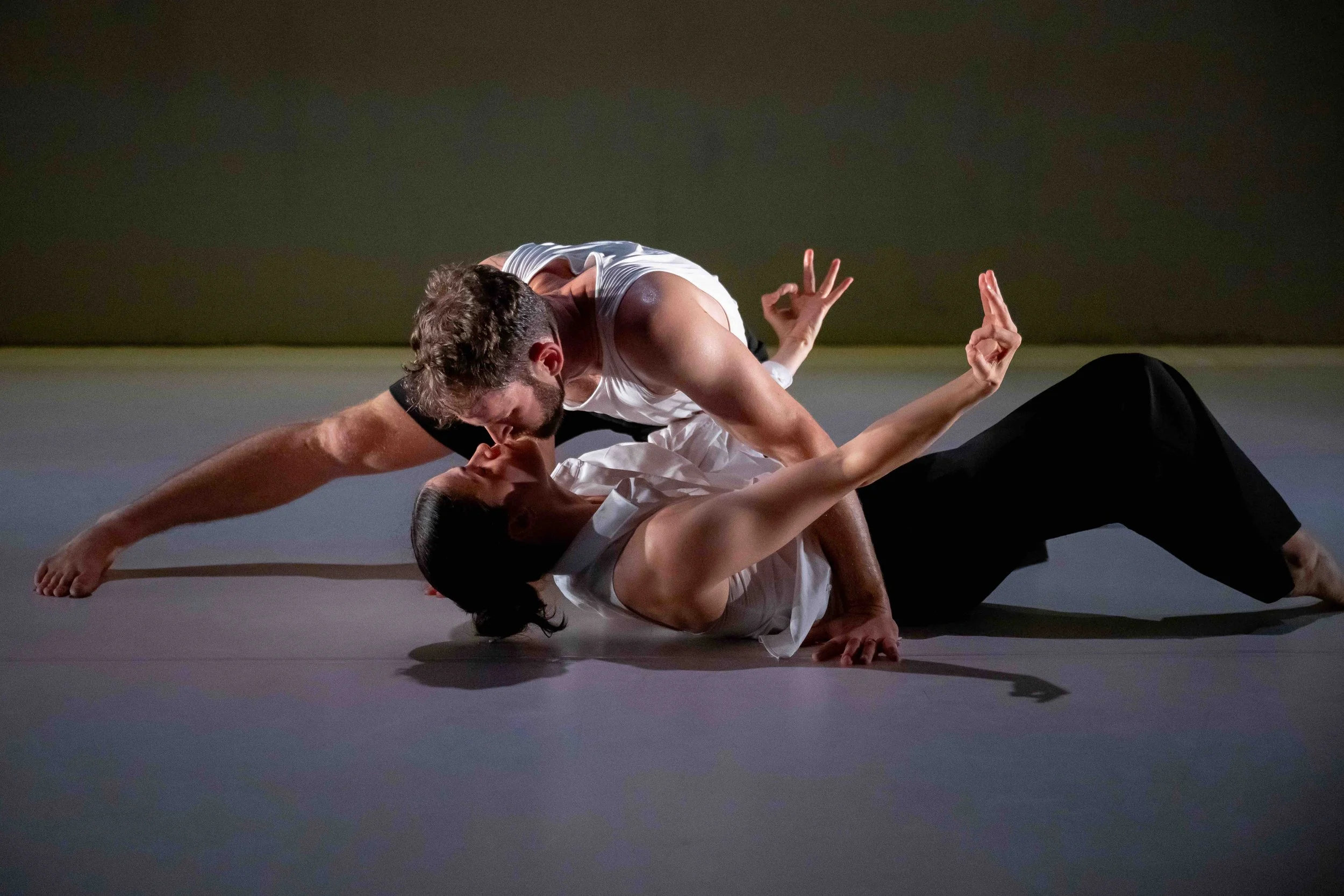Dance review: With Joe, a decades-old dance film speaks artfully to pandemic-era "together but apart" mantra
Jean-Pierre Perreault’s vision of anonymous masses tromping toward an uncertain future still resonates
Sculpted formations and a ramp across the back of the stage make Joe still striking. Photo by Robert Etcheverry
Dancehouse streams Joe until March 23 as part of its Digidance series
DANCE IS THE most fleeting of art forms; even when immortalized on film, it holds an ephemerality, rarely revisited outside of academic settings.
That’s why the webcast of the 37-year-old Joe is a rare treat—and proof that it’s still possible in 2021 to see why it made such an impact. The imagery of anonymous huddled masses—repeatedly hurtling themselves up and rolling down a ramp at the back of the stage—also happens to speak directly to the Kafkaesque pandemic trap we all find ourselves in right now.
Late Quebec choreographer Jean-Pierre Perreault’s game-changing work toured for almost two decades after it was created in 1984, but it never made it to the West Coast. The production on view as part of DanceHouse’s Digidance series was shot in 1995, and while the resolution isn’t up to this era’s sharp digital standards, the multi-camera work by Radio Canada’s Bernard Picard largely compensates for that: think closeups of the stamping boots, overhead images of Perreault’s brilliant group work, and shots that put us amid the struggling crowd.
The work features 32 dancers, dressed in fedoras, long coats, and the black, spit-shone oxford boots that provide the pounding, rhythmic score. When they move as a single organism, their heads down, their shoulders slumped, the performers are truly anonymous: you see only their hats and no faces.
The back of the stage is raked, offering a central challenge to these everymen. It provides a Sisyphean obstacle, the characters rolling across it, throwing themselves up it, and falling down. At several points it also provides a step for more elaborate stomp-work. The brilliantly simple concept captures the human struggle—the ability for people to work together and support each other toward a goal, and the need to break free as individuals.
Perreault stripped the choreography of any dancerly virtuosity or balletic technique, creating an almost awkward pedestrian purity. When the dancers break into high strides, turns, and kicks, it’s more akin to Chaplin by way of the Ministry of Silly Walks. But the movement language is pummelling on the performers, who show rigid control and then explosive release, all on intricate counts. They also find tenderness, frailty, and humanity beneath their ungainly trials.
There’s a necessary monotony to the action, but within that, Perreault creates subtle, fascinating shifts. Sometimes a dancer discovers a new way to move—a subtle slide of the boot, say—and it ripples through the whole group. Sometimes a change in mood arrives with the quiet rise of a harmonica, or a sudden vocalization.
The most striking moments come when Perreault sculpts out space and group formations—no surprise, when you consider he was also a visual artist who conceived the work through drawings. The dancers run and jump on each other, landing in the fetal position, one at a time, until they’ve formed a tight ball. They fall straight backwards, arms outstretched, in a crucifixion-like row across the tilted platform. A man stands in one direction, arm stretched stiffly forward, while the masses pass through him like ghosts.
As noted in the excellent and illuminating post-show documentary, Joe’s imagery shows how “We’re all in this together, but we’re all isolated.” And here we find ourselves, just as Perreault foretold it: collectively trudging our way through a pandemic, unable to connect, shoulders slumped, heads down, pushing up a metaphorical ramp. But, just as in Joe, it’s not all doom and gloom: there’s something deeply inspiring about the sheer will to tromp onwards.













